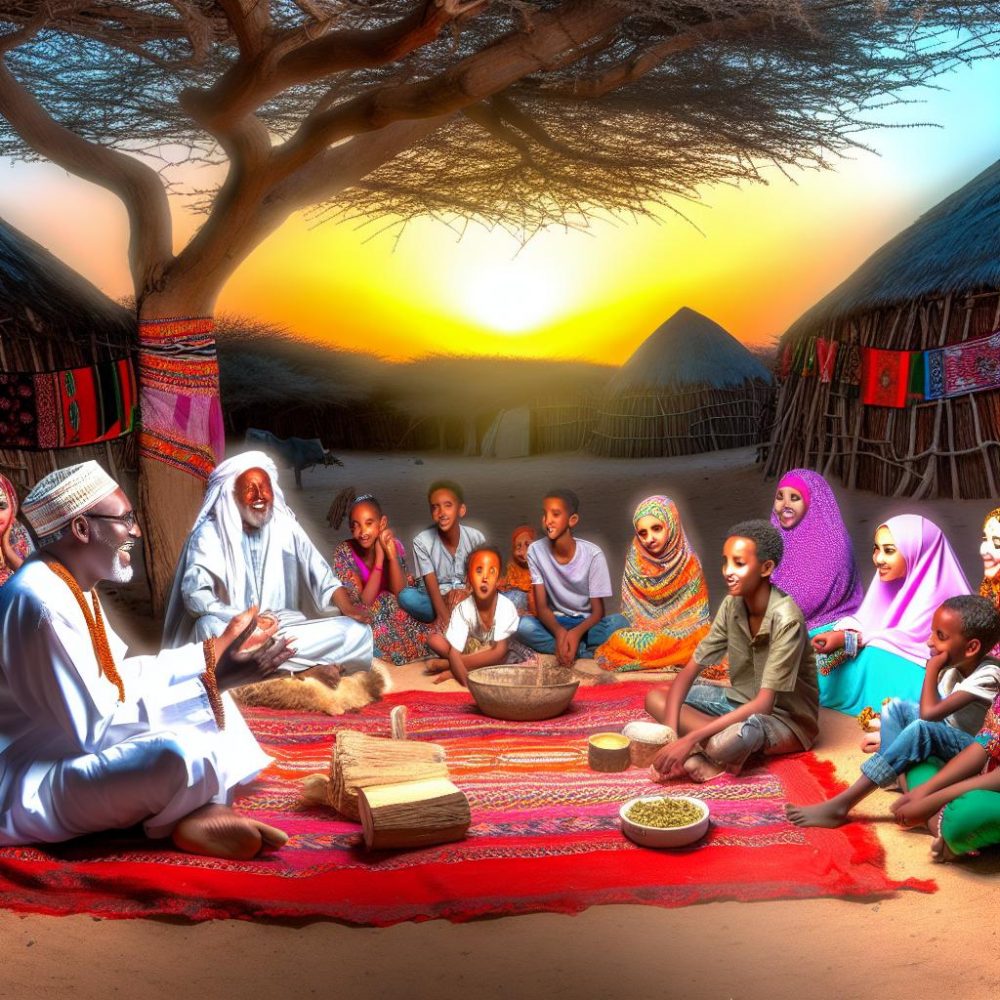
The Role of Oral History in Somaliland
The region of Somaliland, located in the Horn of Africa, boasts a rich tradition of oral history, which plays a pivotal role in preserving the cultural and historical narratives of its people. These oral traditions are integral to understanding the social and cultural fabric of the Somali people in this region.
Importance of Oral Traditions
Oral history in Somaliland serves multiple functions, reflecting a deep-seated tradition within Somali communities. It operates as a primary means of transmitting knowledge, history, and social values across generations. With a deeply ingrained oral culture, Somali communities rely significantly on storytelling as a mechanism to preserve and convey historical events, genealogies, and moral teachings. This tradition has acted as a resilient guardian of the memory of the Somali people’s past, often presented in the forms of gabay (poetry), hees (songs), and sheeko (stories).
Gabay: The Art of Somali Poetry
The gabay, a central pillar of Somali oral tradition, transcends merely being an artistic expression. This form of poetry serves as a dynamic repository of historical narratives and social critiques. Poets employ gabay to weigh in on current events, craft paeans or criticisms towards leaders, and reflect on societal issues. The deliberate meter and rhyme of gabay render it easily memorable, thus facilitating its transmission over successive generations.
Role of Elders and Oral Historians
Within Somaliland, elders and oral historians are highly esteemed as custodians of knowledge. They play a pivotal role in safeguarding the integrity of oral narratives by skillfully retelling stories and ensuring meticulous accuracy. The extensive memory of these individuals, honed through years dedicated to attentive listening and recounting tales, serves as an invaluable resource in a culture where written records remain sparse.
The Intergenerational Transmission of Knowledge
The practice of transmitting oral history in Somaliland underscores an intergenerational process. The younger generation absorbs the art of storytelling and poetry by closely listening to elders. This practice not only serves the purpose of preserving cultural knowledge but also reinforces community bonds and identity. Through the consistent practice of recounting, the essence of these stories is preserved, even amidst potential changes in language or contextual elements.
Challenges and Preservation Efforts
While oral history holds immense significance in Somaliland, it currently faces a number of challenges in the modern era. Factors such as urbanization, globalization, and the increasing influence of digital media have inadvertently contributed to a noticeable decline in traditional storytelling practices. However, concerted efforts are being initiated to document and preserve these invaluable oral traditions. Local organizations and cultural institutions are actively working to record traditional stories and songs, aimed at ensuring their survival for future generations.
Preserving oral history in Somaliland is not merely an act of cultural conservation but plays a critical role in keeping alive the cultural heritage of its people while providing invaluable insights into the social and historical development of the region. Recognizing the significance of these traditions is essential in appreciating the rich tapestry of Somali culture.
The challenges facing oral history preservation in Somaliland are increasingly complex. Urbanization often results in younger generations moving to urban centers for better opportunities, causing a disconnect from their traditional roots. Such migration can disrupt the once-intimate settings where oral storytelling played a central role in community life. Globalization also introduces foreign cultural elements that can overshadow indigenous traditions, leading to a potential erosion of local narratives.
Moreover, the rapid advancements in digital media pose both a challenge and an opportunity. On one hand, digital platforms can distract from oral practices by saturating individuals, especially the youth, with external content. On the other hand, they offer unparalleled opportunities for documenting and disseminating oral histories. Efforts such as podcasts, digital archives, and social media campaigns can play a crucial role in revitalizing and preserving these traditions for a global audience.
Local community centers and cultural groups are engaged in initiatives to respond to these challenges. By organizing storytelling events, poetry readings, and educational workshops, they strive to maintain the vibrancy of oral traditions. Additionally, collaboration with academic institutions and international cultural organizations helps in acquiring the necessary expertise and resources for documenting oral histories in digital formats.
Cultural mapping and documentation initiatives are also gaining prominence. These projects involve cataloguing and recording the different aspects of oral traditions, from gabay and hees to oral testimonies and ancestral stories. Such efforts are often supported by grants and partnerships with organizations that value heritage preservation. Beyond mere recording, these projects aim to analyze and understand the socio-political and historical context embedded within the oral narratives.
For those interested in delving deeper into the preservation of oral traditions, several resources and projects can be explored. For instance, the Somali Museum of Culture offers insight into the cultural artifacts of Somali heritage, including oral traditions. Similarly, initiatives like Heritage for Culture focus on sustaining cultural diversity and heritage.
In conclusion, the role of oral history in Somaliland is indispensable, serving as a cultural anchor amidst the tides of modernization. By safeguarding these traditions and addressing contemporary challenges, the resilience of Somali culture continues to be celebrated and perpetuated. Strategies centered on both preservation and adaptation are imperative for ensuring that the oral narratives of Somaliland remain vibrant and influential for generations to come.